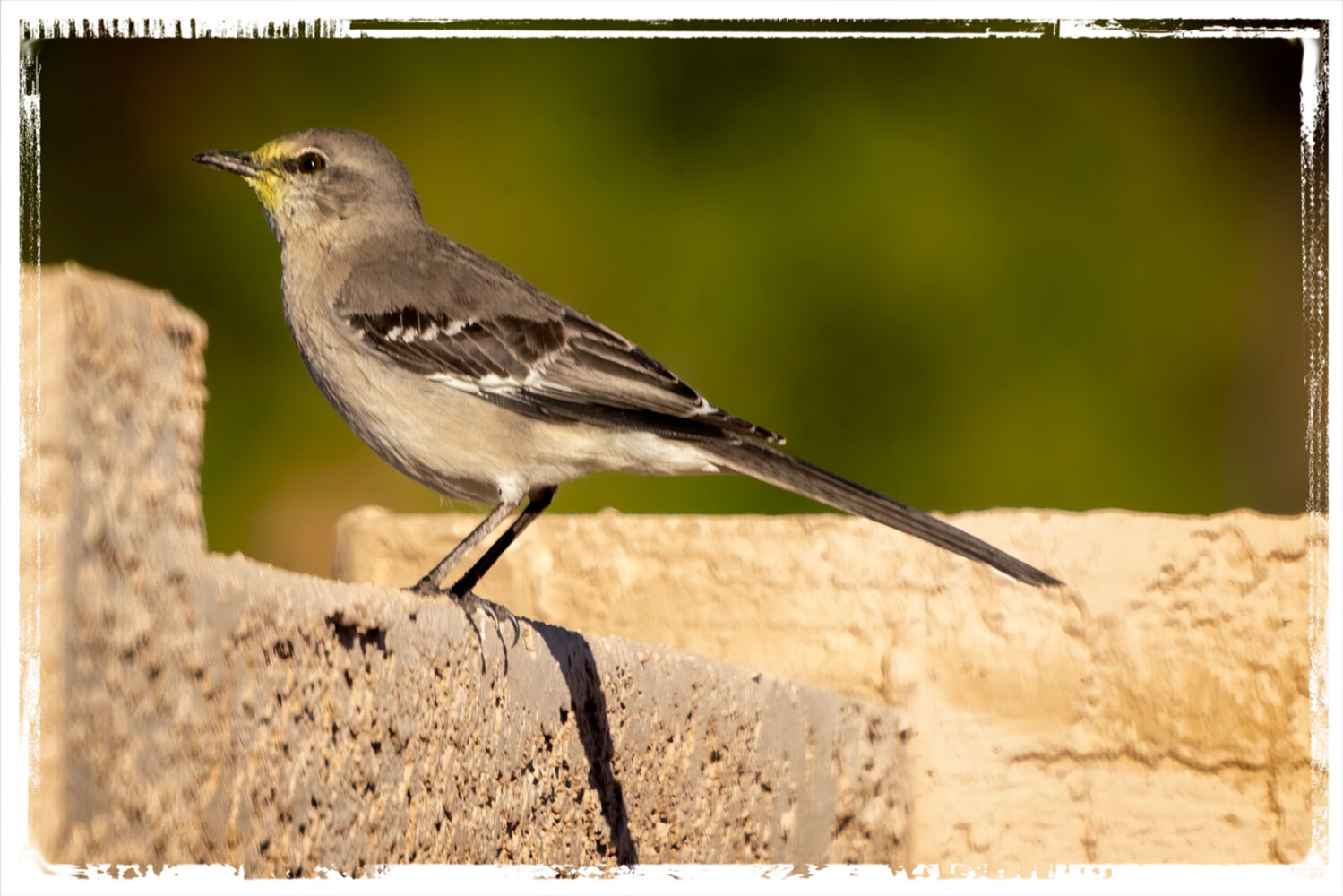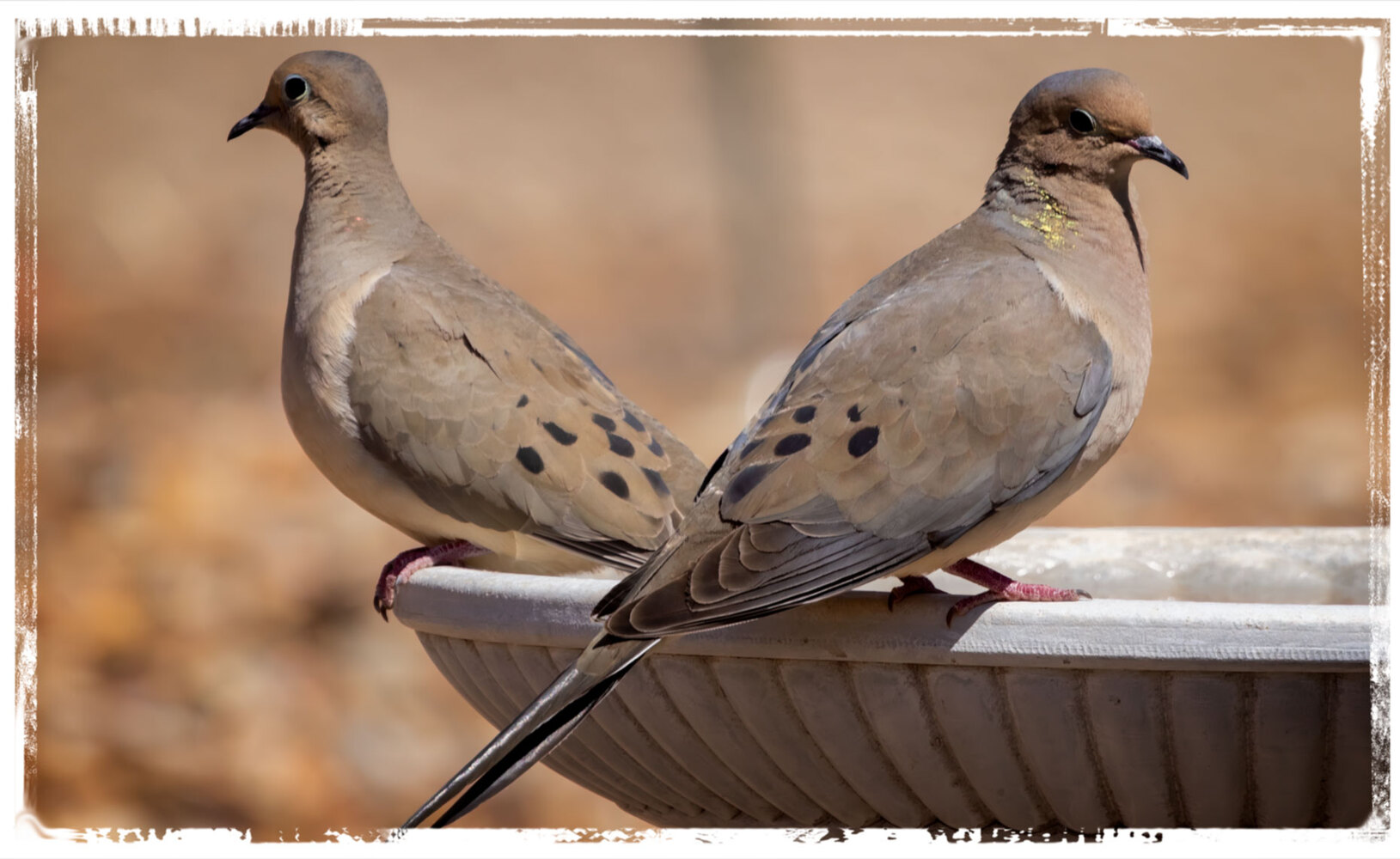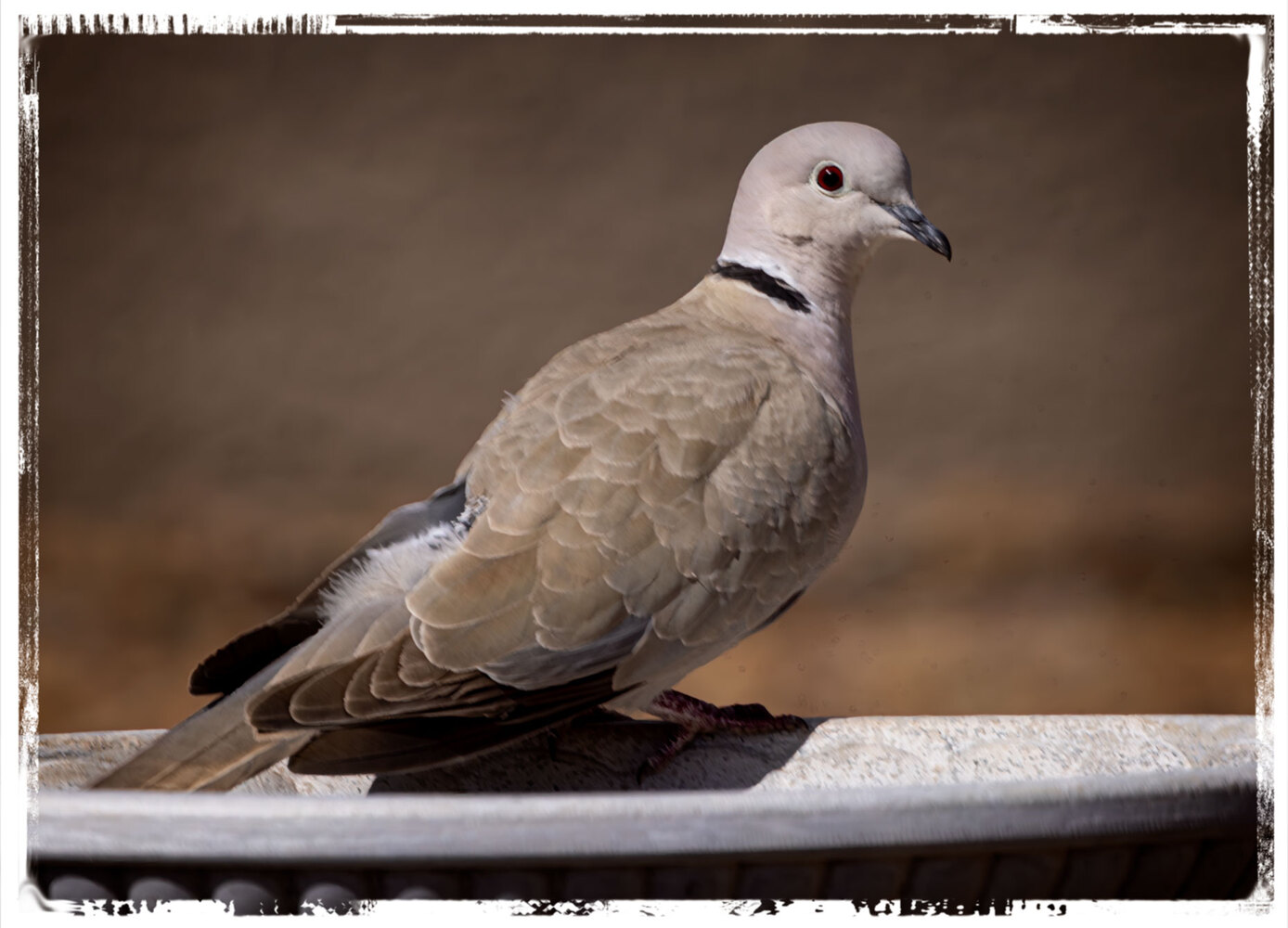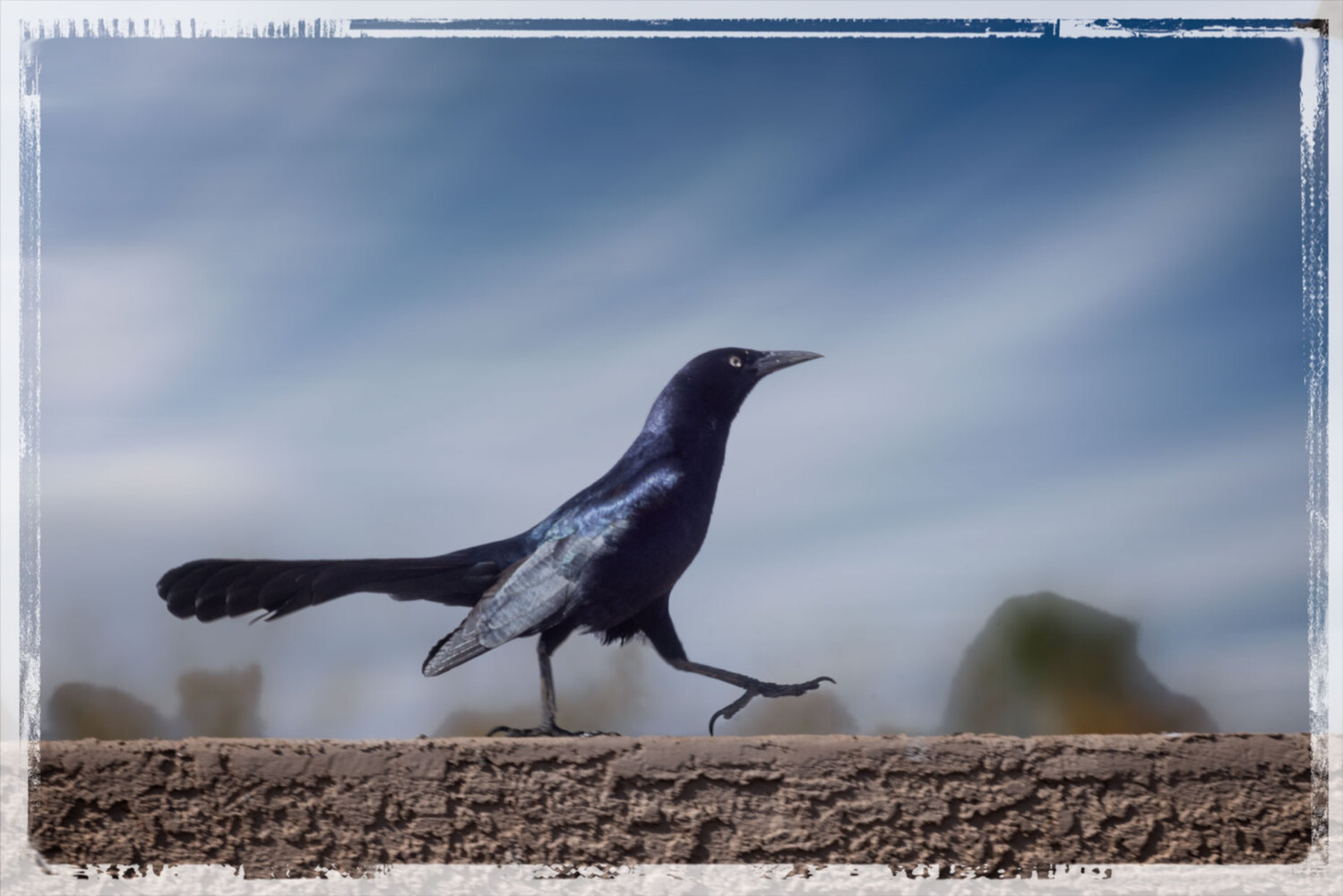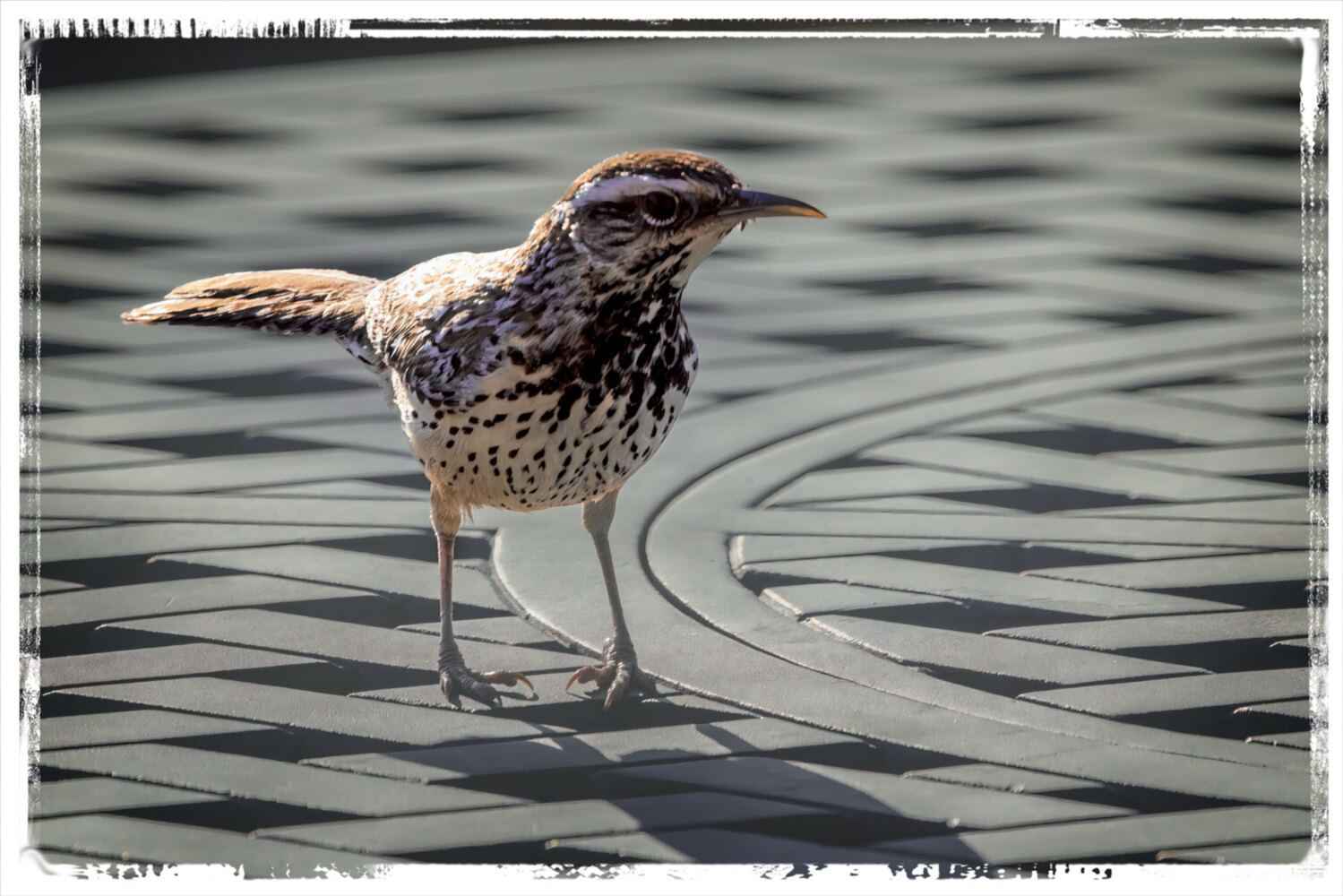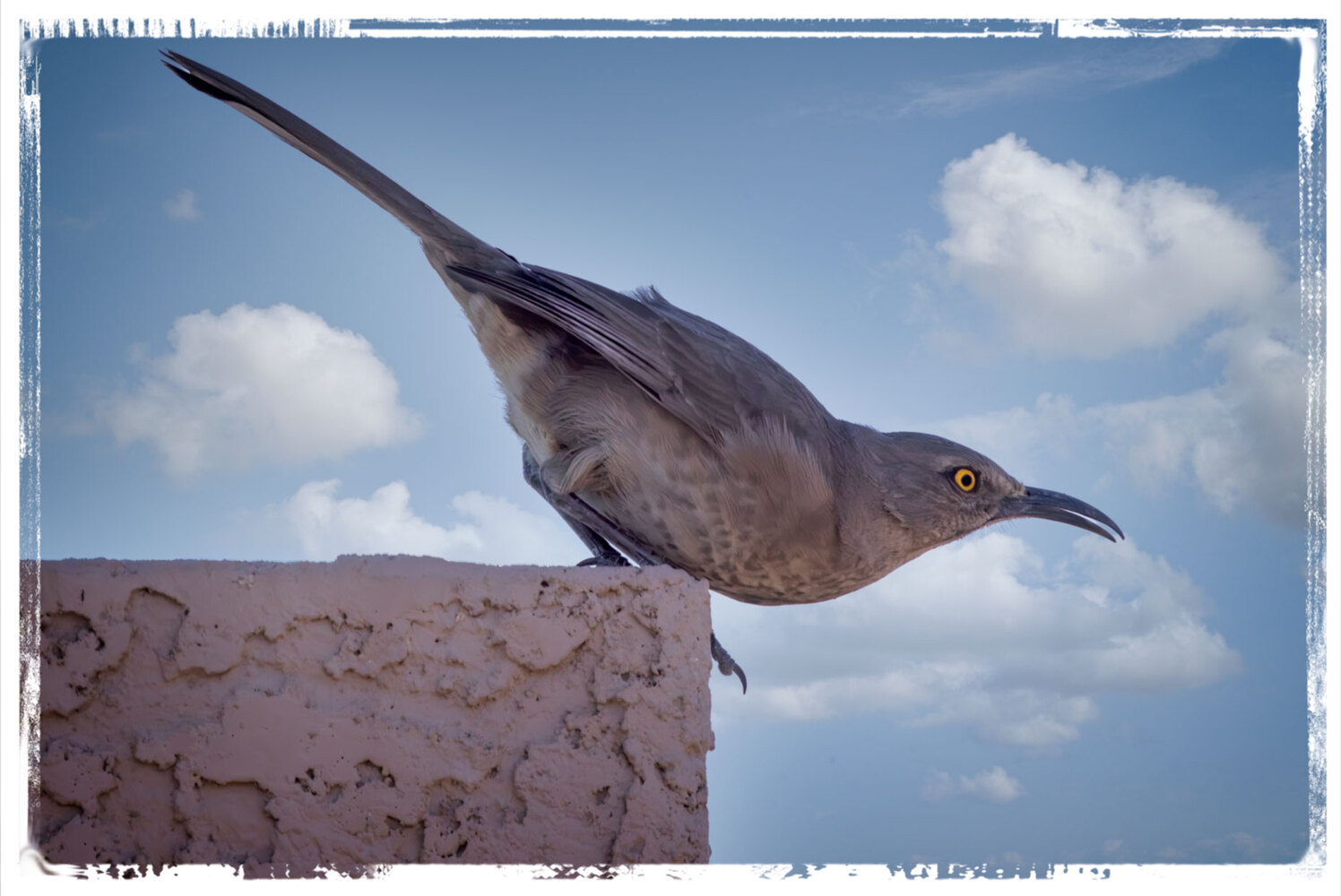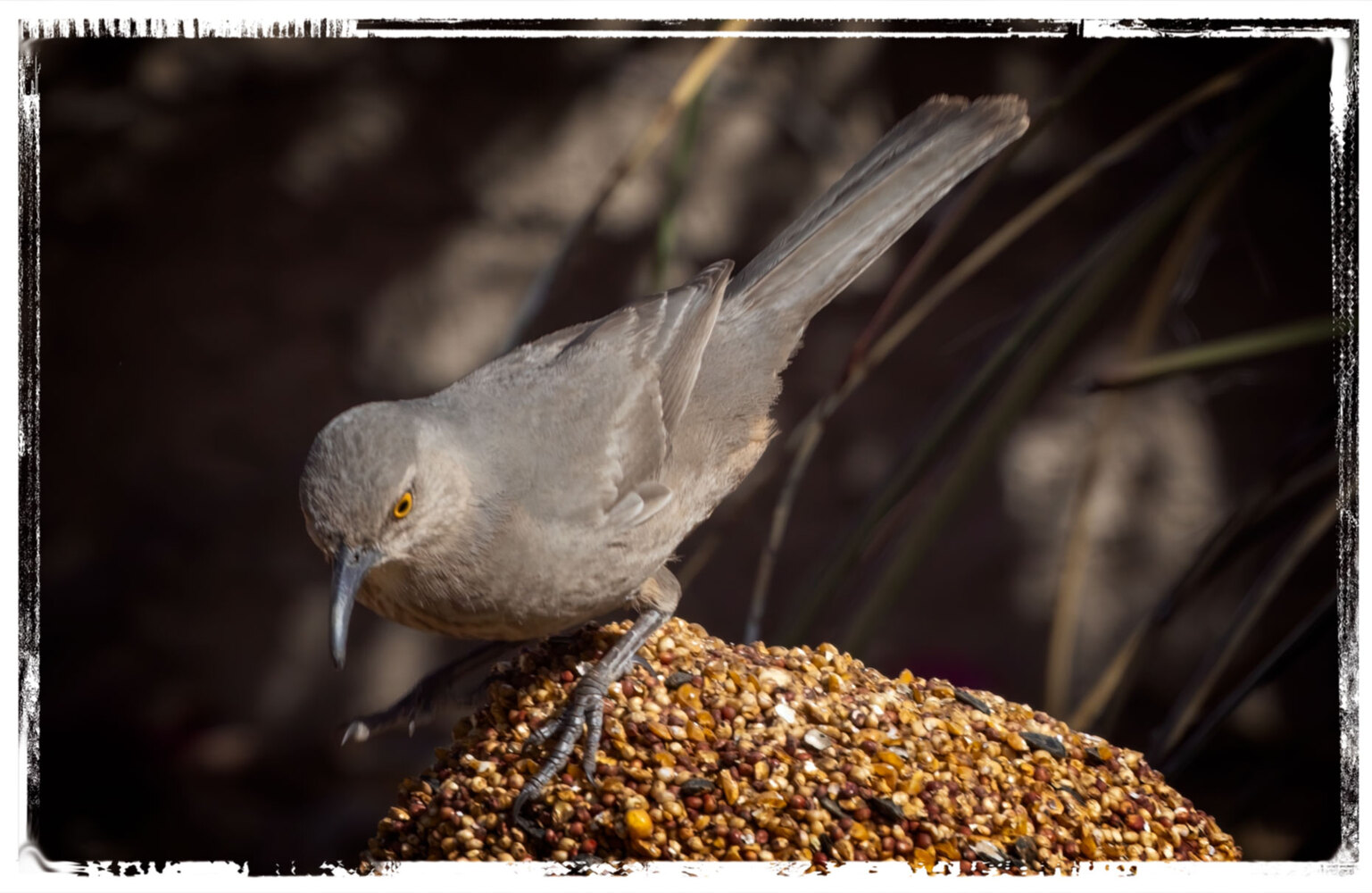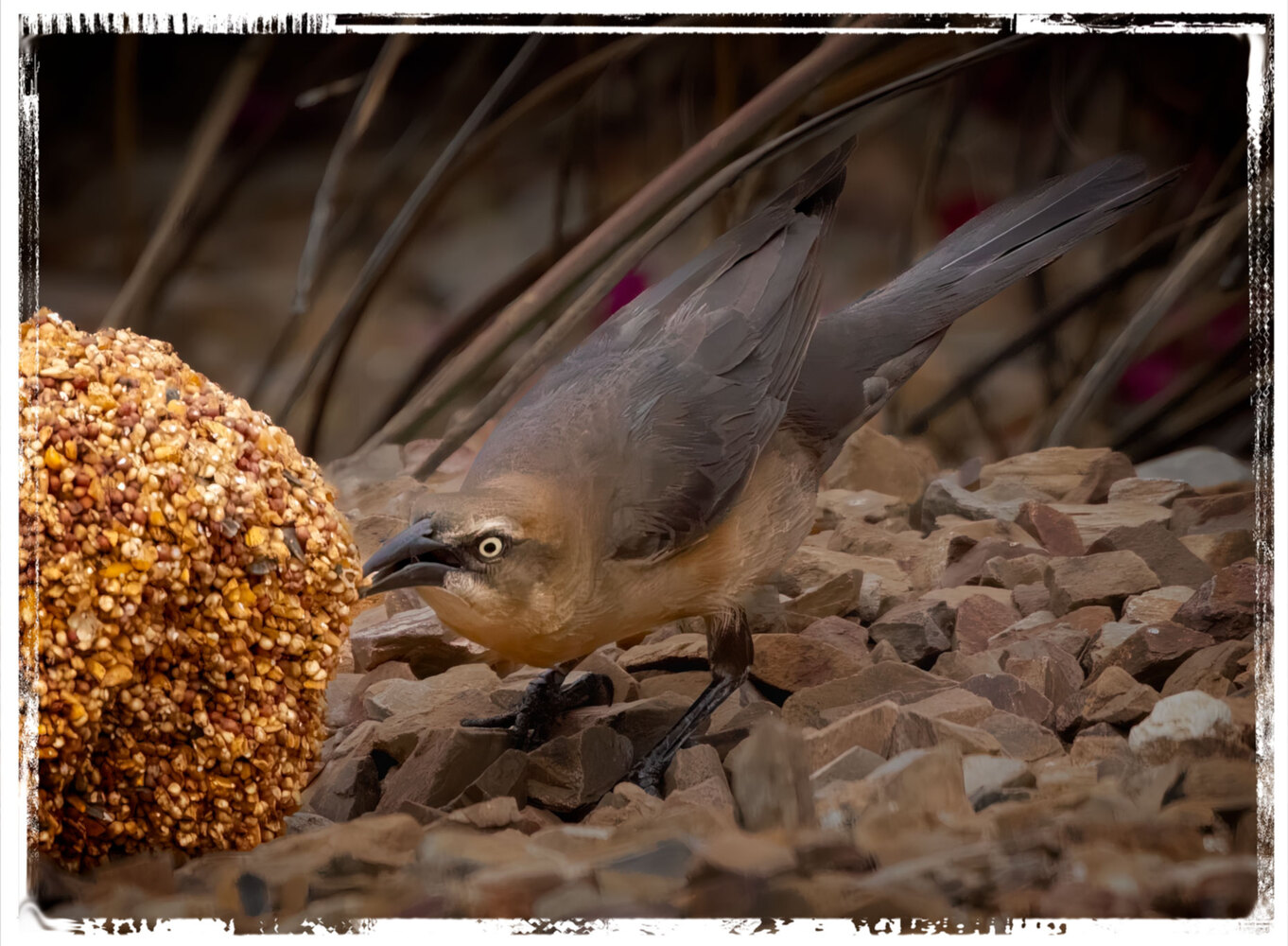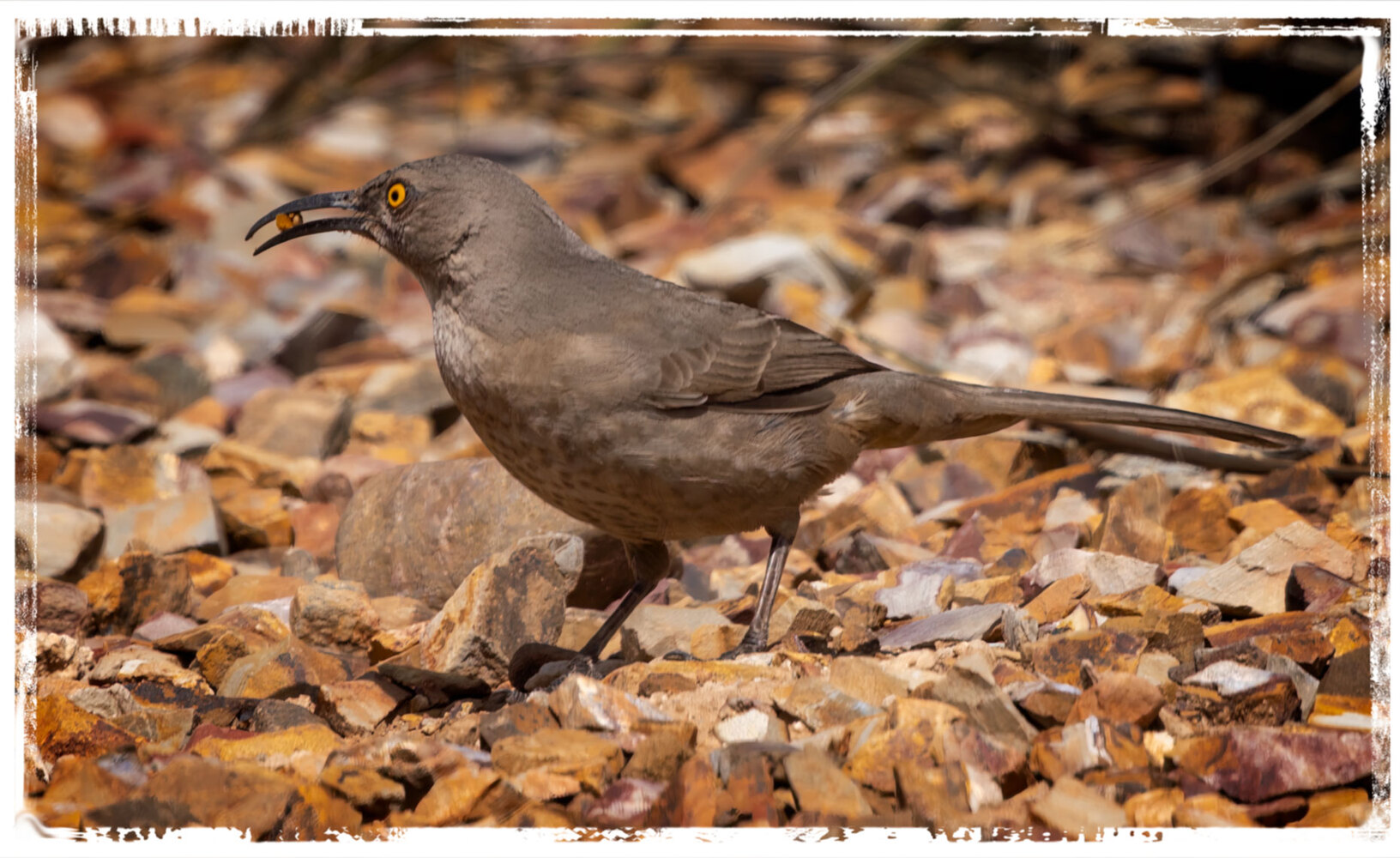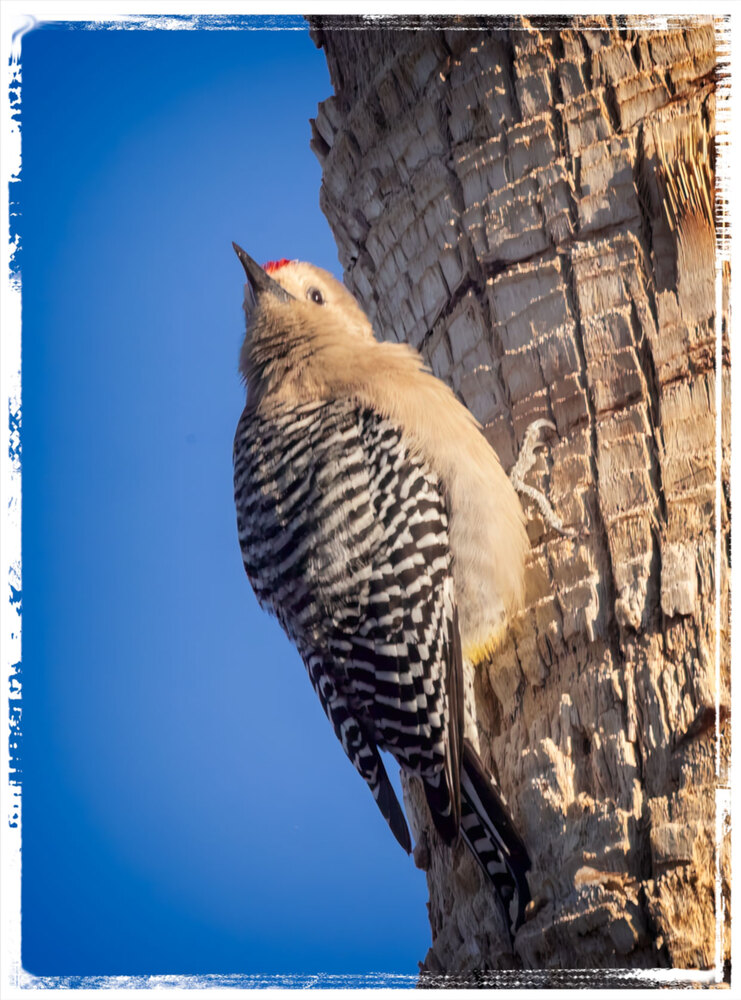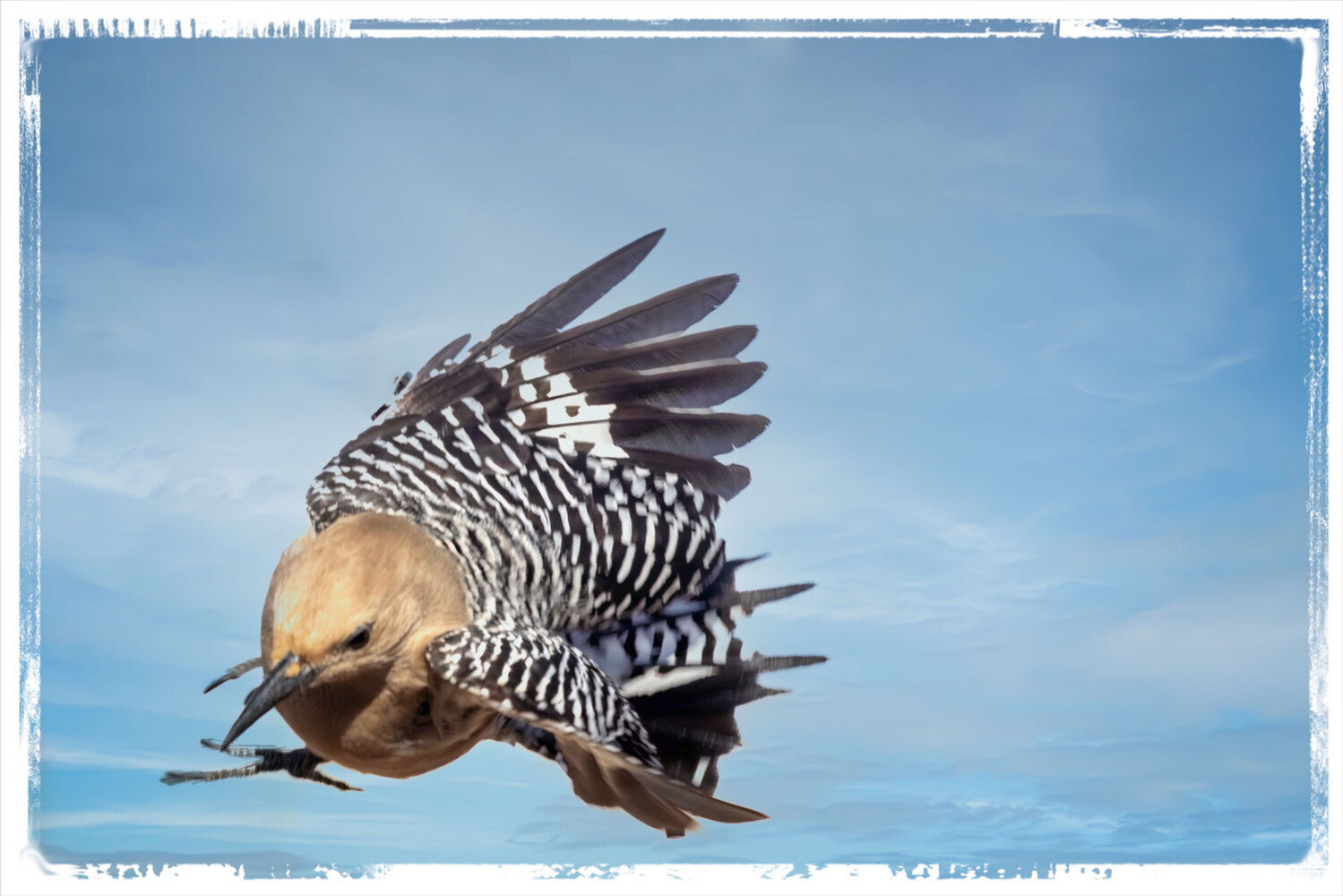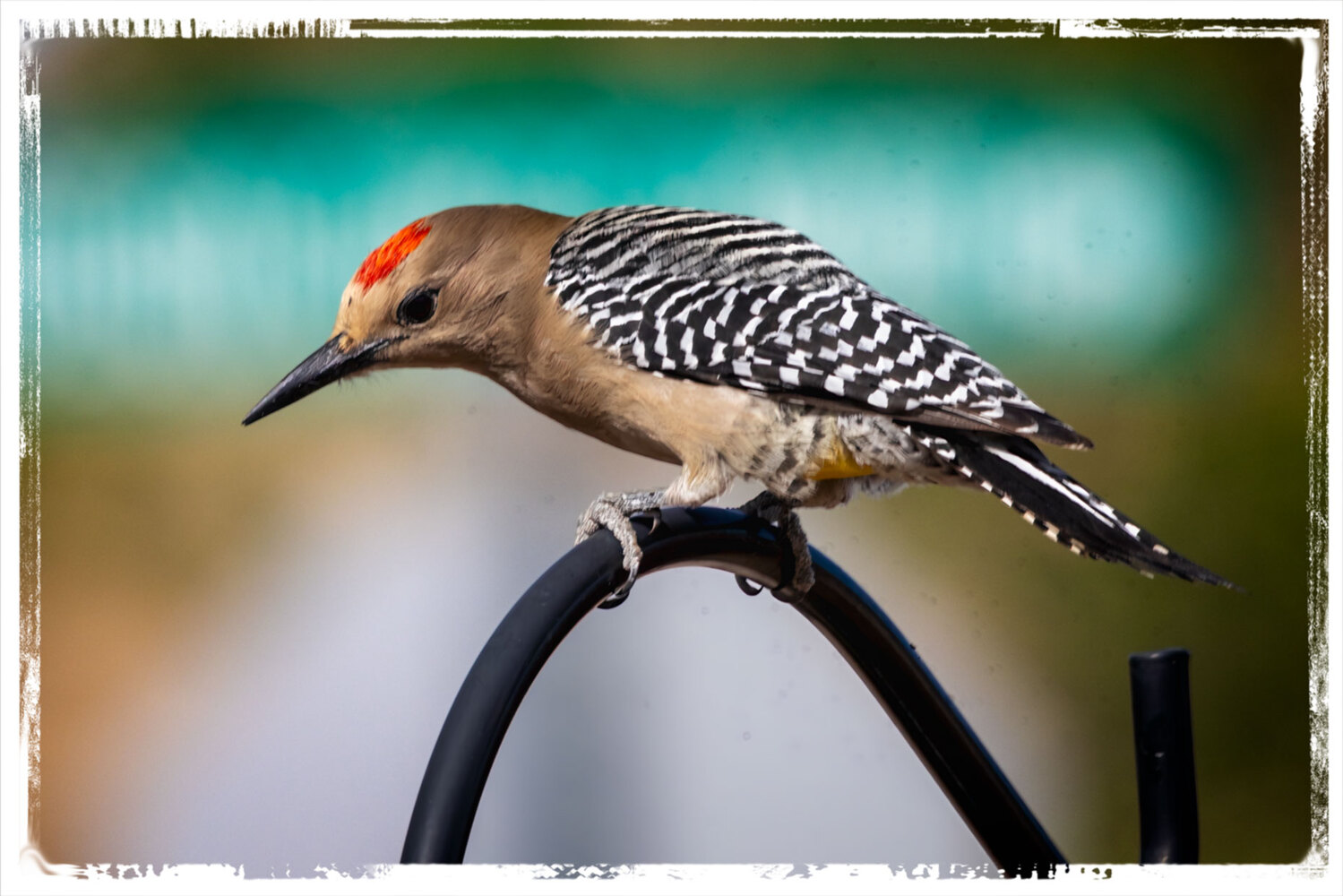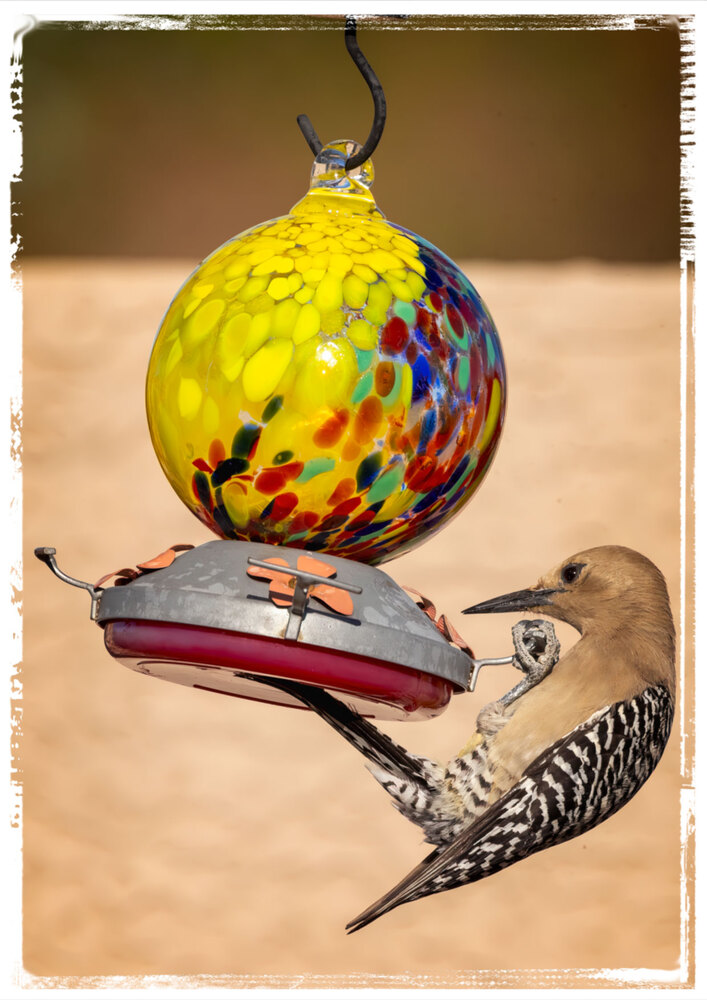Alice seemed almost as excited about our seeing new birds as we were seeing them ourselves. On one of the first days we were there, she yelled “Roadrunner” and told us a Roadrunner had run through the backyard and was in the street in front of the house. I quickly grabbed my camera and captured a few shots
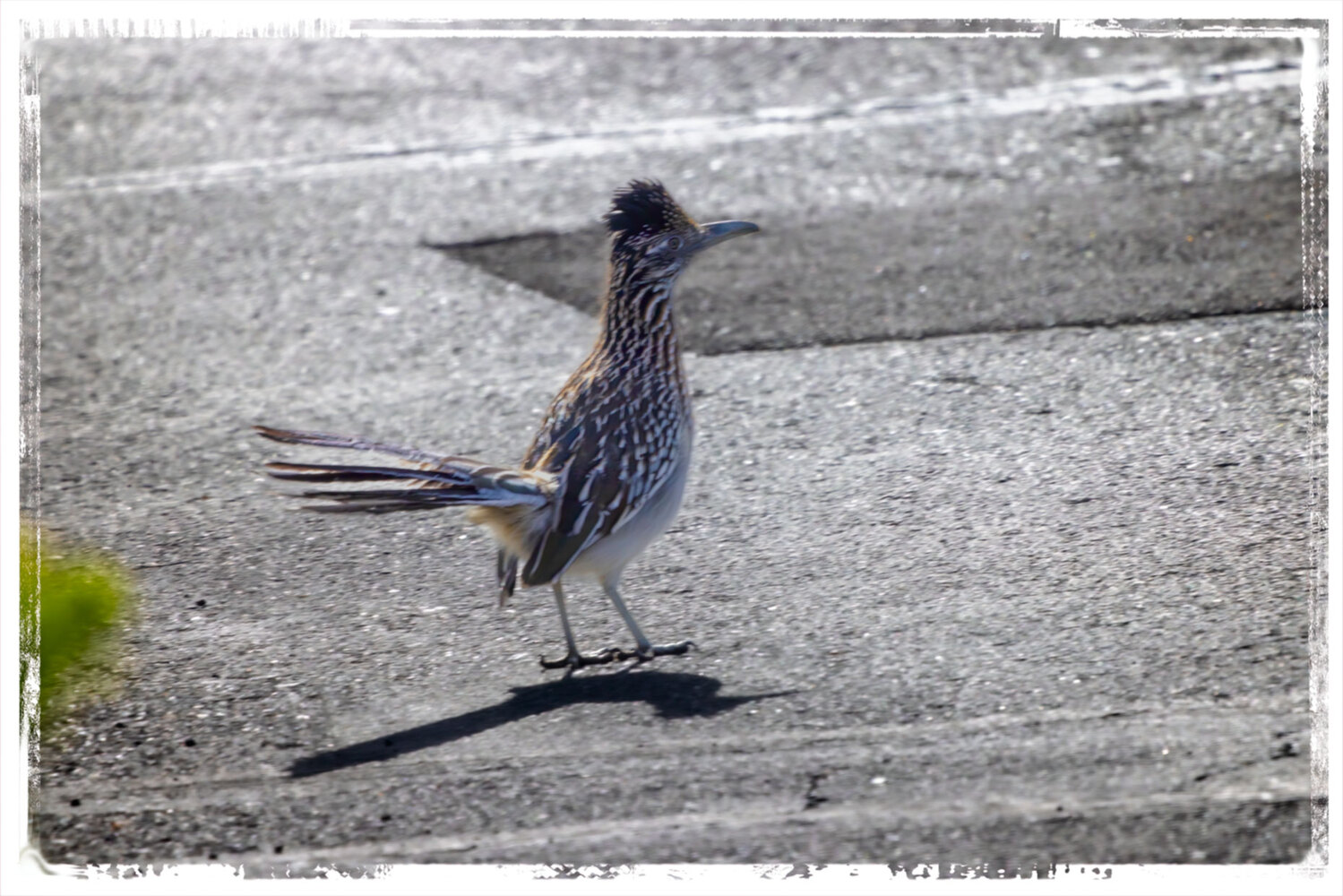
as it walked down the street before flying away. The lighting was terrible and all I could manage was a butt-shot, but I was still thrilled to see one.
It would have been a “Lifer” if I hadn’t already seen several of them when I was stationed at Fort Irwin in the Mojave desert several lifetimes ago. I still consider it a “Lifer,” though, because I definitely wasn’t into bird watching when I was in my twenties and in the Army.
I was disappointed with the quality of the shots, though, and kept looking for it to return. It did on one of our last days there, and it posed long enough for me to capture over 50 shots of it.
I almost missed seeing it at first because it blended in with the background remarkably well.
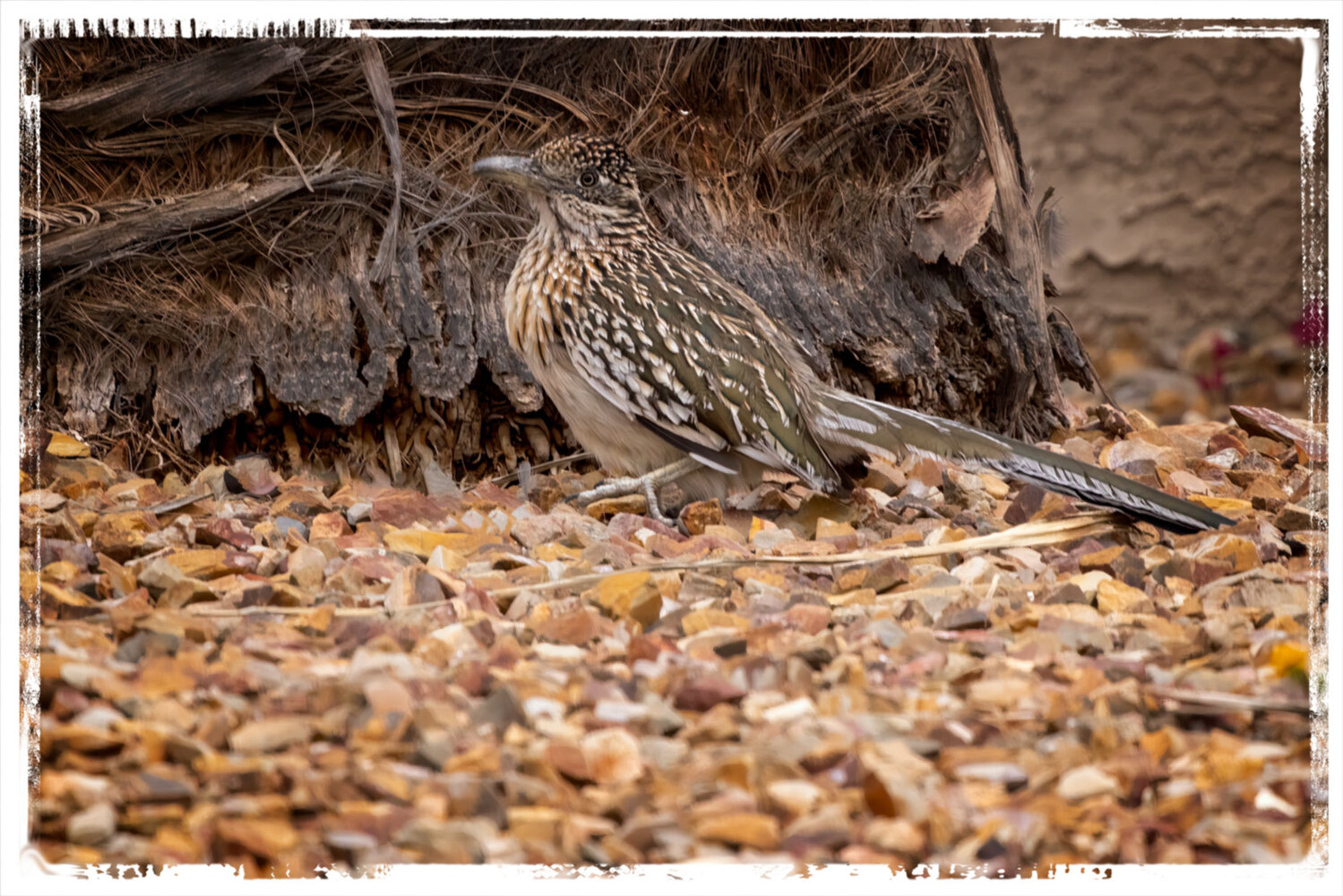
I was afraid that I would scare it, but it was remarkably indifferent to me. It was easy to get some great closeups.
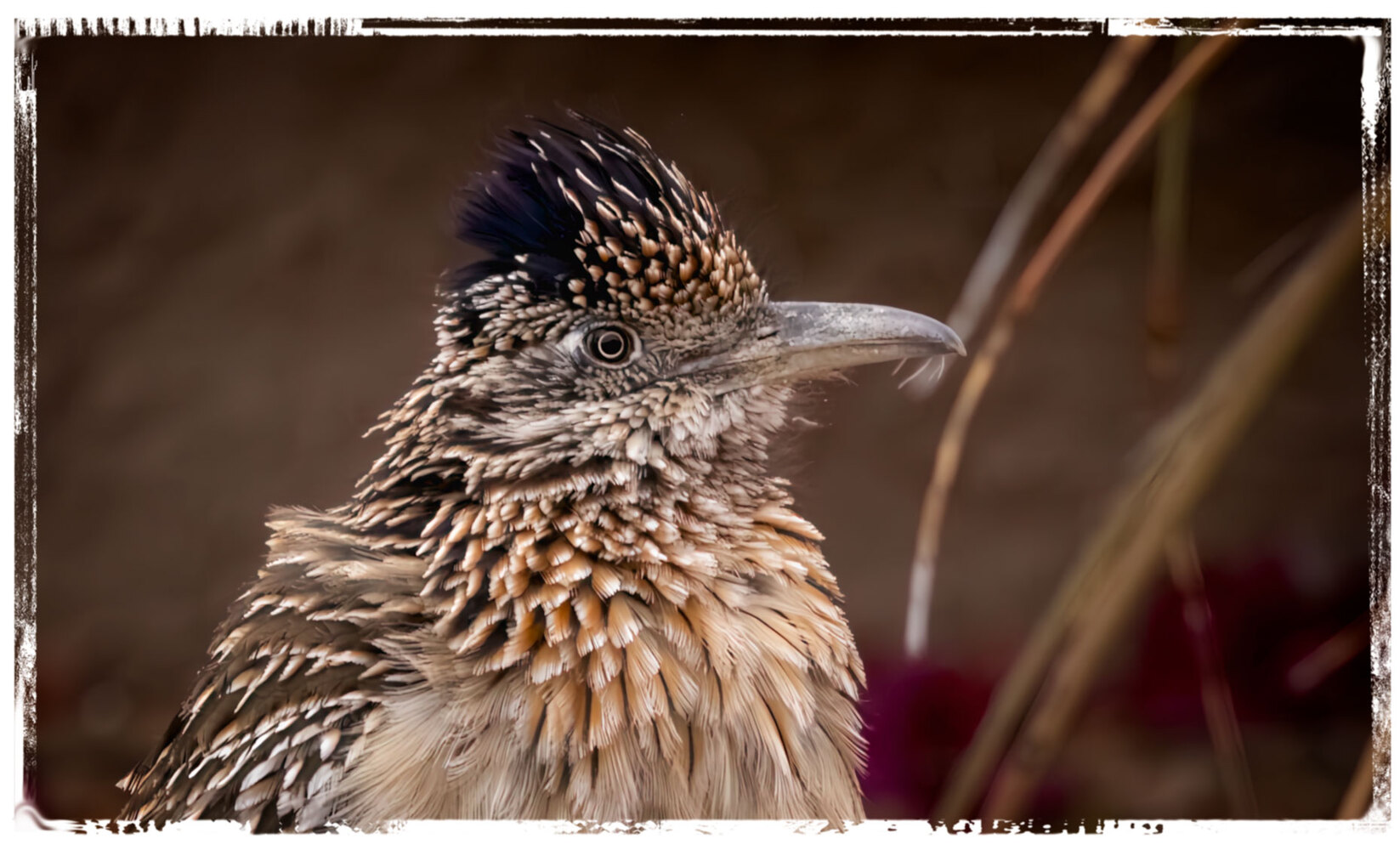
In fact, the hardest part of getting a picture was keeping it in the frame, particularly that long tail,
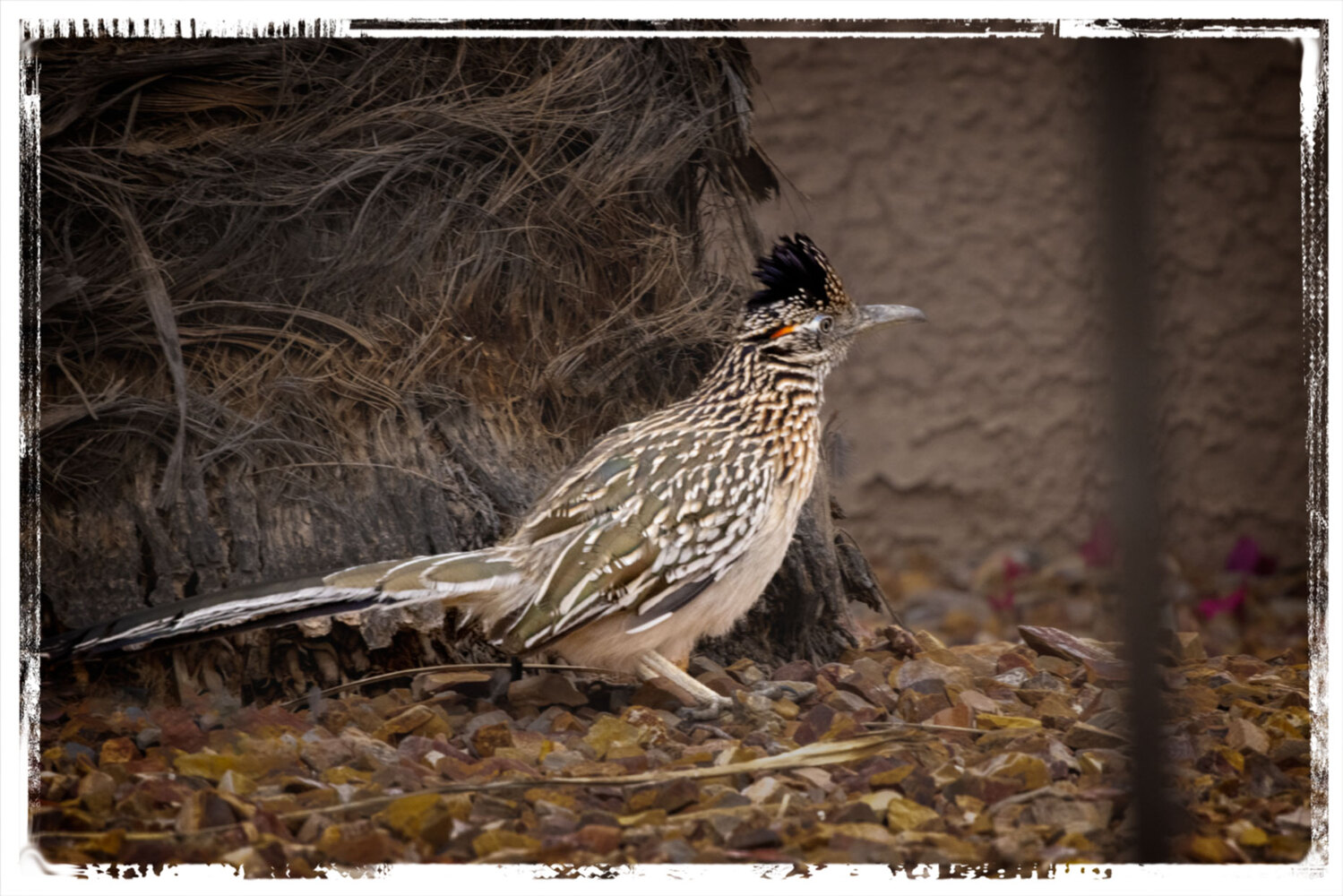
except when it paused to stare back at me.
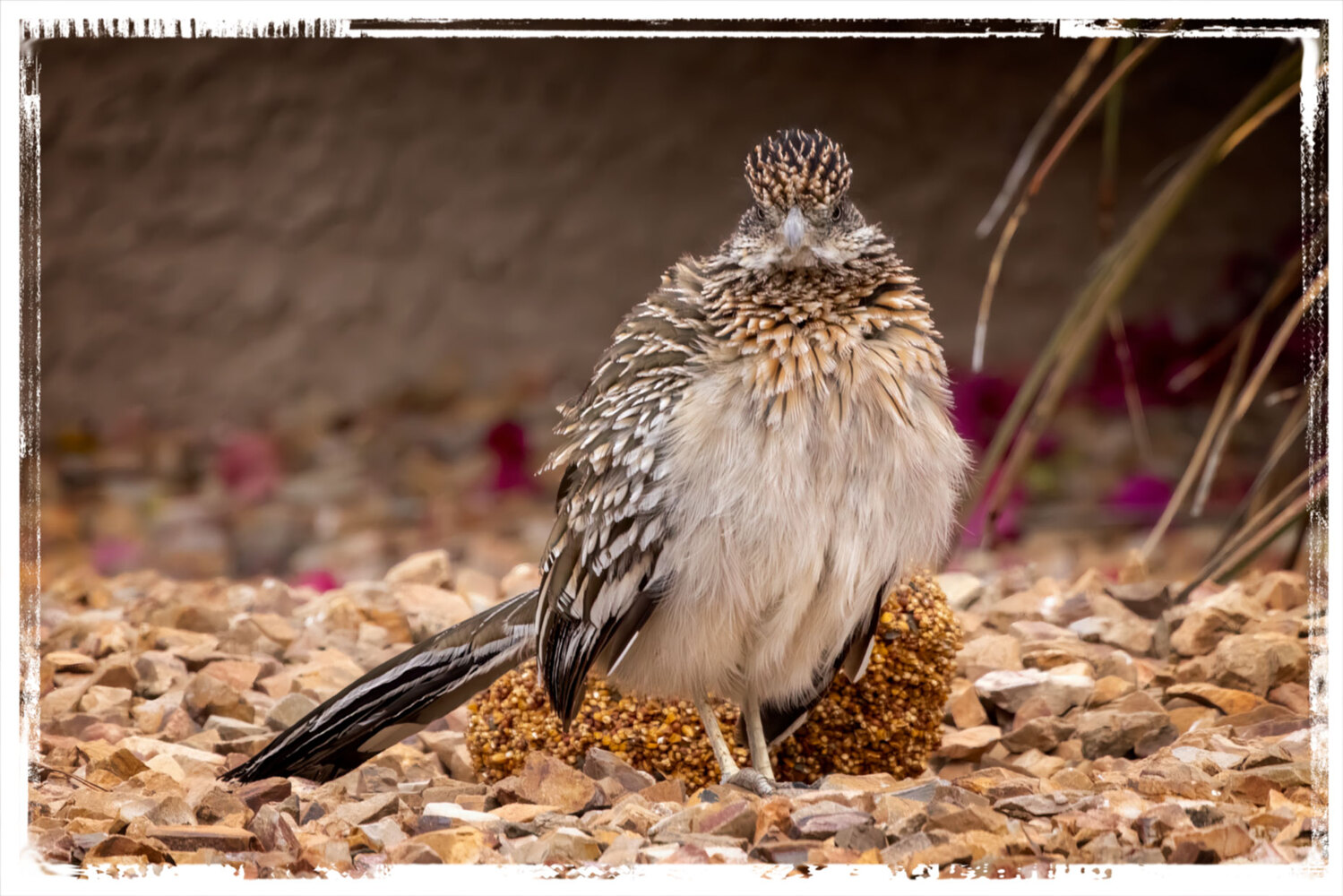
The best shots came when it jumped up on the wall. This would have been my favorite pose
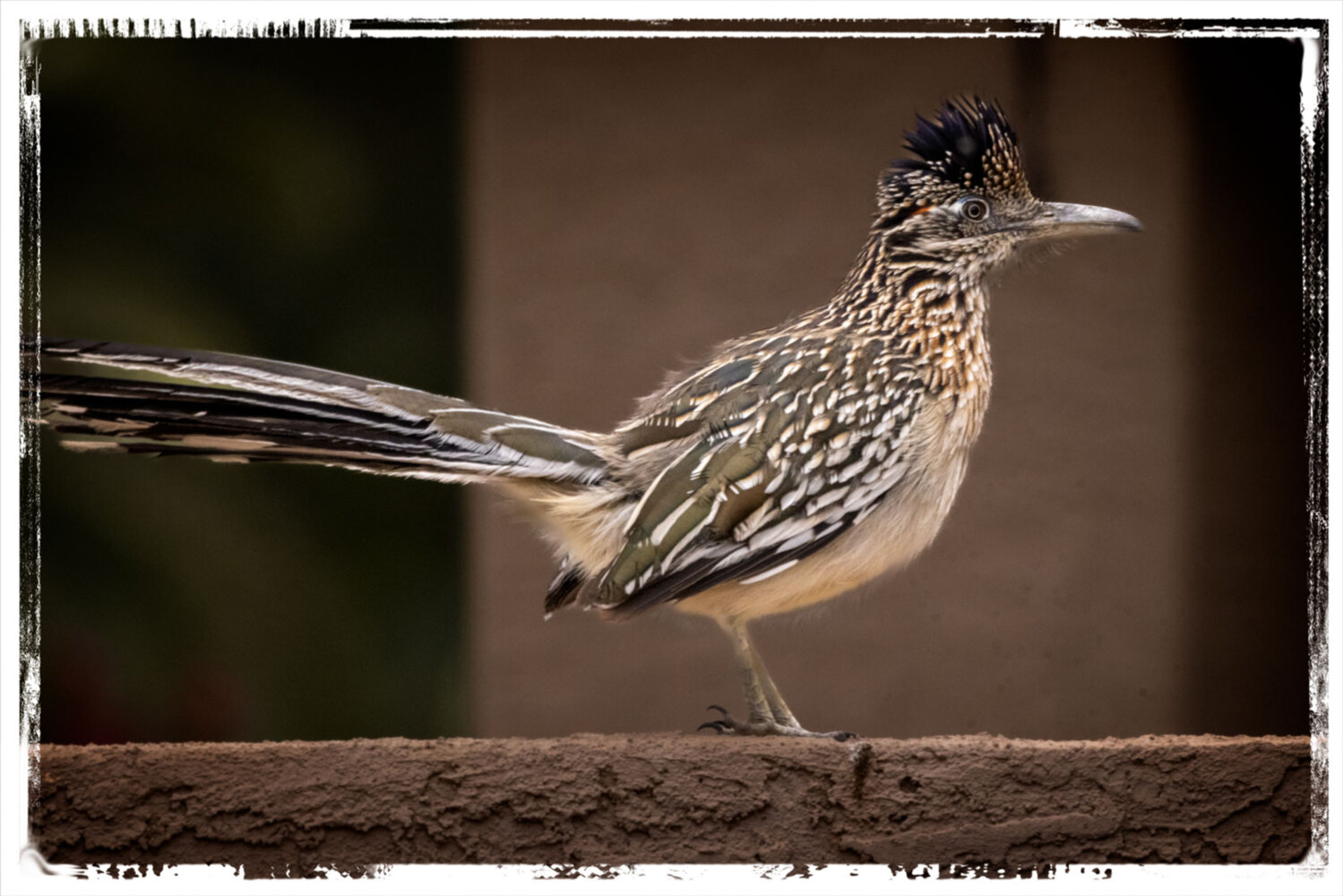
if I had managed to fit the tail into the shot. At moments like this, I remember how valuable a zoom lens can be.
In the end, I think this is my favorite shot, though, because I prefer the way it is framed.
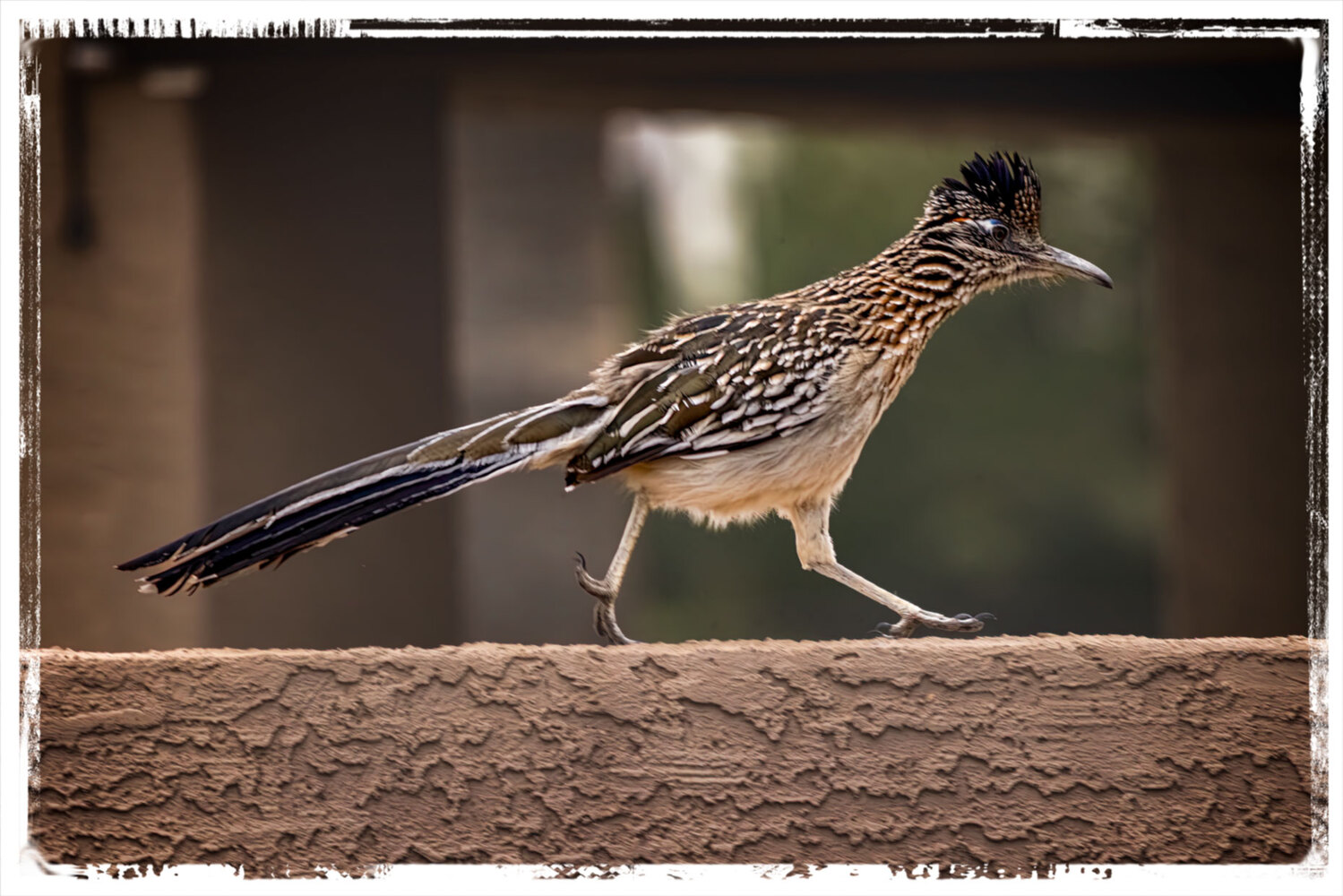
Unfortunately, my photos can’t recreate the pure elation I felt the short time I spent in the presence of this magnificent bird.

